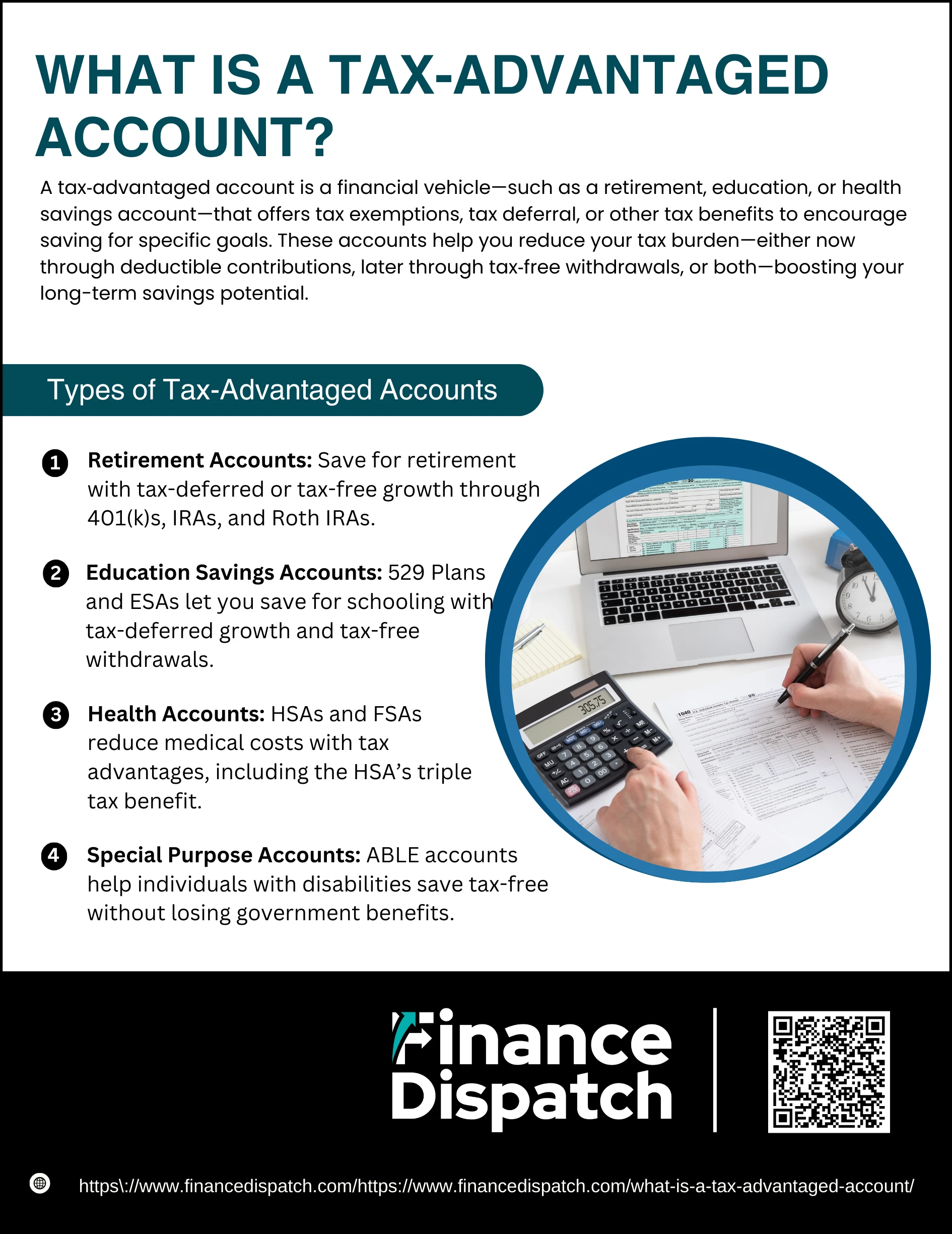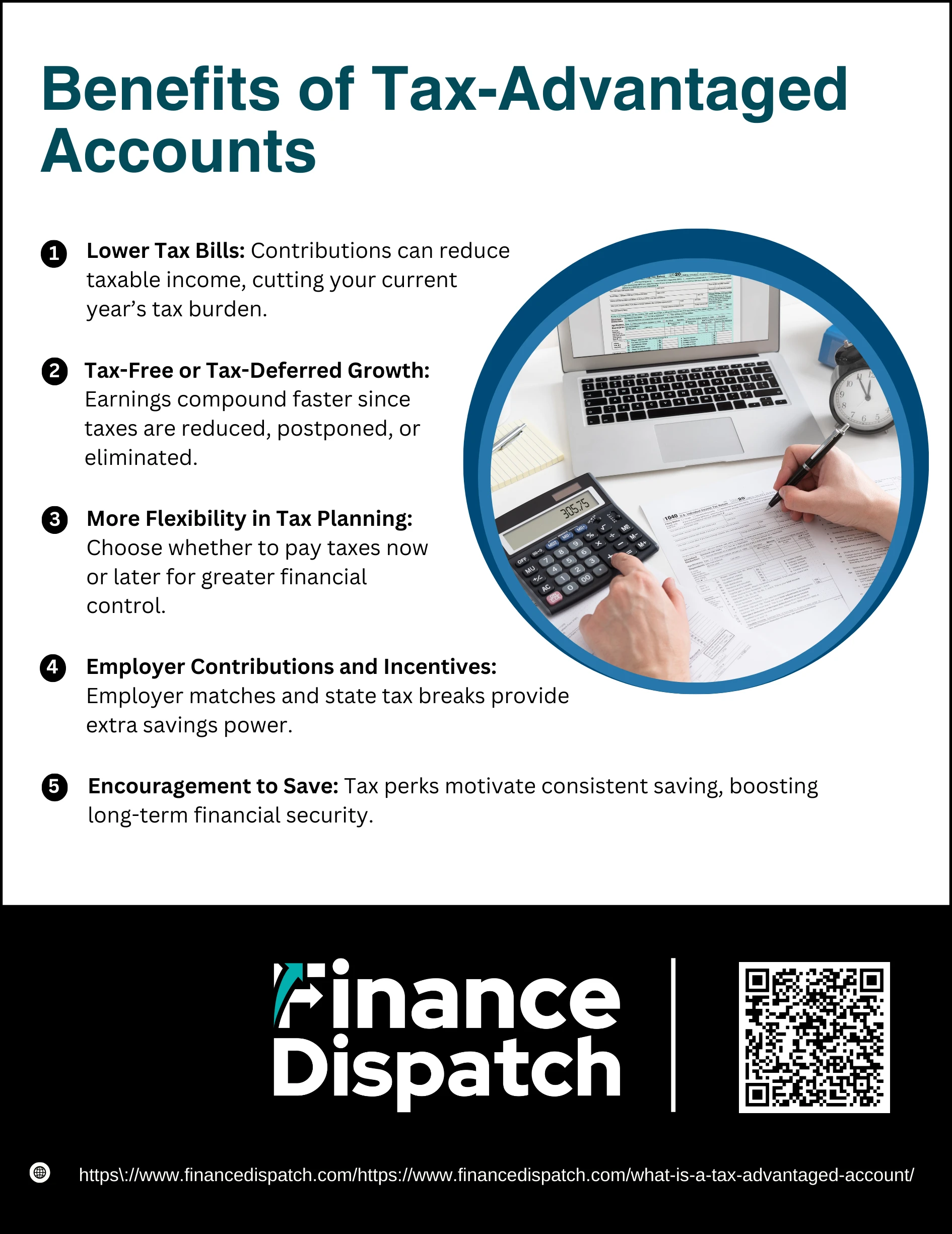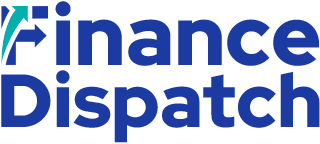When it comes to saving for life’s biggest expenses—like retirement, healthcare, or your child’s education—the way you structure your savings can make a big difference. A tax-advantaged account is a special type of financial account that gives you unique tax breaks, allowing your money to work harder over time. Instead of paying taxes immediately on the money you save or the growth it earns, these accounts let you reduce, delay, or even eliminate taxes altogether—depending on the type of account you choose. By taking advantage of these benefits, you not only lower your tax bill but also create more room for your savings to grow, helping you reach your long-term financial goals faster and more efficiently.
A tax-advantaged account is a special savings or investment account created to help you reach important financial goals while reducing the amount of taxes you owe. These accounts are designed to give you incentives—such as tax deductions, tax-deferred growth, or tax-free withdrawals—when you save for specific purposes like retirement, education, or healthcare. For example, putting money into a traditional 401(k) or IRA allows you to delay paying taxes until you withdraw the funds in retirement, while a Roth IRA lets your money grow tax-free because you’ve already paid taxes upfront. Similarly, accounts like Health Savings Accounts (HSAs) and 529 education plans allow you to set aside money for medical or educational expenses without additional tax burdens. In short, tax-advantaged accounts are tools that not only encourage disciplined saving but also make your money stretch further by minimizing taxes along the way.
 Types of Tax-Advantaged Accounts
Types of Tax-Advantaged Accounts
Not all tax-advantaged accounts work the same way. Some help you save for retirement, others are built for education or healthcare, and a few serve very specific purposes. Each type comes with unique tax benefits and rules, so knowing the differences can help you make smarter financial choices.
1. Retirement Accounts
Retirement accounts are the most common form of tax-advantaged savings. Examples include 401(k) plans, Traditional IRAs, Roth IRAs, and SEP IRAs. With traditional accounts, such as a 401(k) or IRA, you make contributions with pre-tax dollars, which lowers your taxable income now, and you pay taxes only when you withdraw the money in retirement. Roth accounts, on the other hand, are funded with after-tax income, but they allow your savings to grow tax-free, and withdrawals in retirement are also tax-free. Many employers also offer matching contributions in workplace plans like 401(k)s, making them even more valuable for long-term savings.
2. Education Savings Accounts
Education-focused accounts help families save for future schooling expenses while minimizing taxes. The most popular is the 529 Plan, which allows your money to grow tax-deferred and be withdrawn tax-free when used for qualified expenses such as tuition, books, or even K–12 private school costs. Some states also offer additional tax deductions or credits for contributions to a 529 Plan. Another option is the Coverdell Education Savings Account (ESA), which works similarly but has smaller contribution limits. These accounts make it easier for parents, grandparents, or guardians to set aside money for a child’s education without facing heavy tax consequences.
3. Health Accounts
Healthcare costs can be unpredictable, and tax-advantaged health accounts are designed to help ease that burden. The Health Savings Account (HSA) is often considered the most powerful because it offers a triple tax advantage: contributions are tax-deductible, funds grow tax-free, and withdrawals for qualified medical expenses are also tax-free. To qualify, you must have a high-deductible health plan (HDHP). The Flexible Spending Account (FSA) is another option, usually offered by employers, that lets you set aside pre-tax dollars for medical expenses. However, FSAs generally operate on a “use it or lose it” basis, meaning you must spend the money within the plan year or risk forfeiting it.
4. Special Purpose Accounts
Some tax-advantaged accounts are designed for very specific needs. One example is the ABLE Account (Achieving a Better Life Experience). These accounts are for individuals with disabilities, allowing them and their families to save and invest money for disability-related expenses without losing access to government benefits like Medicaid or SSI. Contributions are made with after-tax dollars, but earnings and withdrawals for qualified expenses are tax-free. Special-purpose accounts like these provide critical financial support for long-term planning and day-to-day living needs.
Tax-Deferred vs. Tax-Exempt vs. Tax-Free
When you explore tax-advantaged accounts, you’ll often see three terms: tax-deferred, tax-exempt, and tax-free. While they sound similar, they work differently in practice. The key difference lies in when you pay taxes—either now, later, or not at all. Understanding these categories helps you choose the right account for your financial goals.
Comparison Table
| Feature | Tax-Deferred (e.g., Traditional IRA, 401(k)) | Tax-Exempt (e.g., Roth IRA, Roth 401(k)) | Tax-Free Withdrawals (e.g., HSA, 529 Plan) |
| When you pay taxes | Later, at withdrawal time | Upfront, when contributing | None, if money is used for qualified expenses |
| How contributions are treated | Made with pre-tax dollars, reducing taxable income now | Made with after-tax dollars, no deduction today | Often pre-tax (HSA) or after-tax (529), but benefits apply at withdrawal |
| Growth of investments | Tax-deferred until funds are withdrawn | Tax-free growth | Tax-free growth as long as rules are followed |
| Withdrawals | Taxable as regular income at retirement | Withdrawals are tax-free if conditions met | Tax-free withdrawals for qualified expenses (health or education) |
| Best suited for | People expecting to be in a lower tax bracket later | People who want tax-free income in retirement | Families saving for medical or education costs |
 Benefits of Tax-Advantaged Accounts
Benefits of Tax-Advantaged Accounts
Tax-advantaged accounts are designed to do more than just help you save—they give your money the chance to grow more efficiently by reducing the impact of taxes. Depending on the type of account you choose, you can enjoy immediate tax relief, long-term tax-free withdrawals, or even extra contributions from your employer. Here’s a closer look at the main benefits.
1. Lower Tax Bills
One of the most immediate benefits is the ability to reduce your taxable income. For example, when you contribute to a traditional 401(k) or IRA, the money goes in before taxes, which means you pay less in taxes for that year. This can be especially helpful during your peak earning years, as it may place you in a lower tax bracket and free up more money in your monthly budget.
2. Tax-Free or Tax-Deferred Growth
In a regular savings or brokerage account, you typically pay taxes on interest, dividends, or capital gains each year. With a tax-advantaged account, those taxes are either postponed (tax-deferred) or eliminated entirely (tax-exempt). This allows your money to compound faster, since you’re reinvesting all your earnings instead of sending a portion to the IRS each year. Over decades, this tax break can create a significantly larger balance.
3. More Flexibility in Tax Planning
These accounts let you decide whether you want to pay taxes now or later, giving you more control over your financial future. For instance, Roth accounts are funded with after-tax dollars, but withdrawals in retirement are completely tax-free. On the other hand, traditional accounts let you postpone paying taxes until you retire—when you may be in a lower tax bracket. Having both types of accounts gives you flexibility to balance your income and tax situation in retirement.
4. Employer Contributions and Incentives
Workplace retirement plans like 401(k)s often come with employer matches, which essentially means “free money” added to your savings. For example, if your employer matches 50% of your contributions up to a certain percentage of your salary, you’re instantly boosting your retirement savings without any extra effort. Some states also provide tax incentives for contributions to education plans like 529s, further increasing the value of your savings.
5. Encouragement to Save
Governments and employers design these accounts to encourage people to save for their future. The tax breaks and contribution perks act as powerful motivators, making it easier to set money aside consistently. Over time, this not only builds financial security but also helps reduce the burden on public systems by ensuring more people have their own retirement and healthcare savings.
 Strategies to Make the Most of These Accounts
Strategies to Make the Most of These Accounts
Opening a tax-advantaged account is a strong first step, but to truly benefit, you need to use it wisely. Small decisions—like how much to contribute, when to withdraw, and how to balance different account types—can make a big difference in the long run. Here are some practical strategies to maximize the value of your accounts.
1. Contribute Enough to Get the Full Employer Match
If your employer offers a 401(k) match, treat it as free money for your future. For example, if your employer matches 50% of your contributions up to 6% of your salary, and you only contribute 3%, you’re leaving half of that match on the table. Always aim to contribute at least the minimum required to secure the full match—it’s an instant return on your savings and accelerates your retirement growth.
2. Max Out Annual Contribution Limits
The IRS sets yearly contribution limits for accounts like 401(k)s, IRAs, HSAs, and FSAs. By contributing the maximum, you take full advantage of the tax savings and give your money more time to compound. For instance, in retirement accounts, extra contributions can mean thousands of dollars more by the time you retire. Catch-up contributions are also available for people over 50, allowing them to save even more.
3. Balance Between Tax-Deferred and Tax-Exempt Accounts
It’s not always best to choose only one type of account. Splitting your savings between tax-deferred (e.g., Traditional IRA or 401(k)) and tax-exempt (e.g., Roth IRA) accounts gives you more flexibility. In retirement, this mix allows you to control when and how much you pay in taxes. If tax rates are higher in the future, withdrawals from Roth accounts can provide tax-free income. If you need to lower today’s taxable income, traditional accounts offer relief now.
4. Use HSAs as Long-Term Investments
Health Savings Accounts (HSAs) aren’t just for short-term medical costs—they can also be a powerful retirement tool. HSAs offer a “triple tax advantage”: contributions are tax-deductible, the money grows tax-free, and qualified withdrawals are tax-free. Instead of spending HSA funds on smaller medical bills now, consider paying those out of pocket (if you can) and letting your HSA balance grow for big expenses in retirement, like Medicare premiums or long-term care.
5. Plan Withdrawals Strategically
Every account has rules about when and how you can withdraw money without penalties. For retirement accounts, the magic number is usually age 59½; withdrawing earlier could mean paying both income tax and a 10% penalty. Education accounts like 529 Plans must be used for qualified expenses, while HSAs require spending on medical costs to remain tax-free. Planning withdrawals with these rules in mind helps you avoid penalties and ensures you keep your tax benefits intact.
6. Stay Updated on IRS Rules and Contribution Limits
Tax laws aren’t set in stone—they change often. Contribution limits for accounts like 401(k)s, IRAs, and HSAs usually rise over time to keep up with inflation. Rules around withdrawals, required minimum distributions (RMDs), and eligible expenses may also shift. Staying informed, or consulting with a tax professional, ensures you don’t miss opportunities to save more or accidentally break rules that could trigger penalties.
Common Mistakes to Avoid in Tax-Advantaged Accounts
While tax-advantaged accounts can be powerful tools for building wealth, they also come with specific rules and limits. Misusing them—even unintentionally—can lead to penalties, lost tax benefits, or missed opportunities for growth. Knowing the most common mistakes will help you protect your savings and make the most of these accounts.
1. Missing Employer Match Contributions – Failing to contribute enough to your 401(k) to qualify for the full employer match means leaving free money on the table.
2. Exceeding Contribution Limits – Putting in more than the IRS allows can result in tax penalties and reduce the account’s benefits.
3. Withdrawing Funds Too Early – Taking money out of retirement accounts before age 59½, or using HSA/529 funds for non-qualified expenses, can trigger penalties and extra taxes.
4. Not Diversifying Between Account Types – Relying only on tax-deferred accounts may leave you with a large tax bill in retirement. Balancing with Roth or tax-free options adds flexibility.
5. Ignoring Required Minimum Distributions (RMDs) – Failing to take RMDs from traditional retirement accounts after age 73 can lead to steep IRS penalties.
6. Treating HSAs Like a Regular Spending Account – Using HSA funds for small bills now may waste their long-term potential as a powerful retirement healthcare savings tool.
7. Not Staying Updated on IRS Rules – Contribution limits and withdrawal rules often change, and missing updates could cost you tax savings or cause compliance issues.
Conclusion
Tax-advantaged accounts are some of the most effective tools you can use to build long-term financial security. By lowering your tax burden and allowing your money to grow more efficiently, these accounts make it easier to save for retirement, healthcare, education, or other important goals. The key is understanding how each type works, choosing the right mix for your situation, and avoiding common mistakes that could reduce their benefits. Whether you’re just starting to save or looking to refine your financial strategy, making the most of tax-advantaged accounts can give you greater control over your future and help your money go further.



